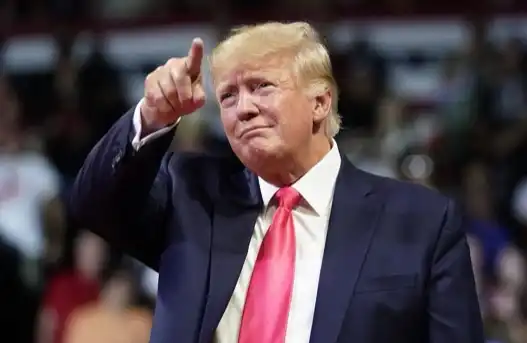Messari’s top ten investment trends in 2024: bullish on Bitcoin, bearish on Ethereum, betting on emerging narratives such as AI\DePIN
Original Title: "CRYPTO THESES 2024"
Source: Messari
Translation: Deep Tide TechFlow
As scheduled, the well-known encrypted data and research institution Messari has released "Messari Theses 2024". We have compiled and translated the first chapter for you, which outlines the top ten investment trends for 2024.
In the author's opinion, Web3 is a very silly concept name. When everyone stops using this term and returns to the narrative of "Crypto", the total market value of cryptocurrencies doubles.
In this year's investment trend forecast, Messari expressed a strong optimism towards Bitcoin, while being bearish on Ethereum, believing that the "sound money" narrative (referring to sustained inflation leading to sustained growth) is nonsense. Compared to Solana, Ethereum does not have overwhelming advantages. In addition, Messari strongly believes in the combination of AI and cryptocurrency. Based on the disclosed analyst positions, many people hold tokens such as AKT and TAO, and Messari is also optimistic about the three emerging narratives of DePIN, DeSoc, and DeSci.
Welcome to read the full article:
1.0 Investment Trends
Last December, I, representing all people in the cryptocurrency industry, abolished the term "Web3".
This is a nonsense, PR-driven phrase that undermines everything interesting we are trying to build.
NFT PFP collection is Web3, "DeFi 2.0" is Web3, and Sam Bankman-Fried is Web3...
In the world of encryption, I want more things that are not completely dependent on Ponzi scheme plans, such as personal wallets, transaction privacy, infrastructure progress, DeFi, DePIN, and DeSoc.
This year did not disappoint.
Since the cold-blooded murder of the term Web3 (referring to the collapse of scams representing Web3), the market value of cryptocurrencies has almost doubled. The biggest fraudsters in our industry are either in jail or soon to be there.
Great products paired with smooth designs are then released. And I am even more excited about the prospects of cryptocurrency in 2024.
In short, the state of the encryption market is strong.
I realize that some newcomers may be reading this article, so I want to remind you that this is an advanced course and not an introductory course for beginners.
I assume that you already have relevant knowledge, so I will be brief because time is an important factor.
This "Investment Trends" section at the beginning is prepared for those who want to tell their friends that they have read the entire report. I don't think it's necessary to start the victorious journey on the first three sections of my report last year, but we see smooth performance in various market segments, and there is evidence to support the recent need for optimism after a long winter in the encryption industry.
We will start the content of this article from the bull market case of Bitcoin in 2024.
1.1 BTC and Digital Gold
"What stage are we in now? It feels a bit like January 2015 or December 2018, with a hint of the feeling of selling a kidney to buy more Bitcoin."
The above is my view on Bitcoin as of December 2022.
Although it is difficult to predict the trading position of Bitcoin in the short term, its appeal is almost indisputable from a longer time scale.
We don't know whether the Federal Reserve will further raise interest rates, or hit the emergency brakes, reverse direction, and begin implementing quantitative easing in earnest. We don't know whether we will face a recession driven by commercial real estate, or whether we will successfully achieve an economic "soft landing" after the monetary and fiscal whiplash of the post-COVID era. We don't know whether stocks will fall or fluctuate, or whether Bitcoin will prove to be related to tech stocks or gold.
On the other hand, the long-term argument for Bitcoin is very straightforward. Everything is becoming digital. Governments are heavily indebted and spendthrift, and they will continue to print money until they fail completely. The total amount of Bitcoin that investors can obtain is only 21 million. The strongest MEME in the market is about to have its four-year marketing campaign through the Bitcoin halving in 2024.
Sometimes all you need is to keep it simple!
In order to maintain year-on-year consistency, let's revisit the MVRV chart I wrote about last year that made people want to sell their kidneys to buy in. To recall, this chart compares Bitcoin's current market value (MV, i.e. price * total supply) with its realized market value (RV, i.e. price * the sum of each unit's supply when last moved on-chain).
In the above calculation theory, if the ratio between the two is below 1, it is the golden zone. Ratios above 3 always indicate the peak of a cycle.
After a 150% increase this year, is Bitcoin still a good "buy" target?
The answer is somewhat affirmative.

Perhaps we are no longer in the realm of deep value, but given some institutional tailwinds supporting us currently (ETF approvals, FASB accounting changes, new sovereign buyers, etc. as seen in Chapter 4.1), it is clear that buying Bitcoin with an MVRV ratio of 1.3 is no longer a blind leap of faith for investors.



First of all, from a historical perspective, this has been proven to be a successful strategy. If you attended the North American Bitcoin Conference in Miami in 2014 and purchased the products recommended by Vitalik (Ethereum ICO and Bitcoin), you would have enjoyed a 75% market growth over the past decade. These blue-chip assets have now become the most robust "hard investment" in the cryptocurrency market, as you don't have to worry about the risk of supply dilution over time.


Many cryptocurrency investors not only performed poorly, but have even exited the market. Some liquidity investors have been in trouble due to bad leverage positions (such as 3AC), poor trading counterparts (such as Ikigai), or both (as we discussed in detail in Chapter 6 about DCG). You should know all of these, and I won't repeat last year's crisis.
So what will happen in 2024? The liquidity crypto market will still be a jungle full of technical and counterparty risks, high transaction costs, and fierce competition. Adjacent to this jungle is a true "death valley" - the private crypto venture capital market.
Overall, the VC market has been severely impacted in recent years by the shocking monetary policy of the Federal Reserve. The crypto infrastructure has been hit even harder due to fraud and extensive regulatory crackdowns. New users and customers are excluded from accessing "long-tail" crypto assets until they obtain much-needed legal clarity, while existing users and customers are cutting expenses and trying to survive this winter as much as possible. This has led to brutal demand destruction: service revenue declines, burn rates accelerate, budgets further reduced, and so on.
What's worse, AI has become the new darling of the technology industry. Once again, we have become bystanders. (As I explained in Chapter 1.8, I believe this is a foolish MEME and a wrong choice. AI and cryptocurrency are actually a good match.)
Despite this, I remain optimistic about new crypto investors. The 2023 funds are likely to outperform the S&P index in the medium to long term, and many may even surpass the benchmark performance of BTC/ETH, thanks to the unusually low market entry prices this year. The liquid market has regained vitality, and there are signs of a rebound in the venture capital market.
The financing amount of private equity venture capital (from seed round to D round+) has reached the highest level since May, with over $500 million in announced transactions (which can be tracked in our financing screener):

Here is a list of some of the cryptocurrency funds that I have been following this year:
Multicoin: I wrote a trilogy about their legendary performance in 2021. However, it is unclear how their LP will cope with the harsh reality of SOL's 96% crash in 2022. Even if Multicoin's AUM rebounds significantly again this year, I am not sure which fund LPs have experienced greater roller coasters.
1confirmation: Nick Tomaino is one of the most honest crypto investors I have ever met. He candidly addressed the benchmarking issue I mentioned earlier, the need for better accountability in crypto investments, and his role as one of the few contrarian investors questioning Sams. First it was SBF, then Altman. His actions also demonstrate his views, even sharing his fund's DPI, which is rare in the venture capital market.
There are also some "bullish at the bottom" investors, whose tweets turned out to be correct predictions in hindsight. Framework (Vance) and Placeholder (Burniske) are two examples of investors who expressed specific views and were not simply perpetual bulls. (Even those who are bullish at the peak may prove to be prophets in the long run.)
a16z and Paradigm may be at a disadvantage in terms of valuing their private investment portfolios, depending on how much capital they invested at the market top in 2021, but I don't want to bet against Chris Dixon, Matt Huang, and their team. In fact, I am somewhat glad that they have had mediocre or temporarily losing investment performance in some years. This has made them excellent fighters in the industry in Washington, and their policy team has performed well.
Syncracy Capital's performance since its inception has far exceeded the cryptocurrency market. The team includes three former Messari analysts, including co-founder Ryan Watkins. Full disclosure, I am an LP in this fund and will shamelessly promote those who helped build Messari and continue to make me money after leaving. They are one of the few new liquidity funds that have consistently outperformed the BTC/ETH benchmark since their inception.
1.5 IPO and Mergers and Acquisitions
In the world of cryptocurrency, there are three companies that stand out for their positioning, team, and ability to acquire capital. They are Coinbase, Circle, and Galaxy Digital.
Coinbase remains the most important company in the cryptocurrency industry. As the most valuable and tightly regulated cryptocurrency exchange in the United States, Coinbase deserves a separate introduction. It is unlikely to face major competitors in the US market next year, but one of its main partners, Circle, may conduct an IPO in 2024.
Circle's CEO Jeremy Allaire shared at Mainnet that Circle's revenue in the first half of 2023 reached $800 million, with a pre-tax profit of $200 million before interest, taxes, depreciation, and amortization - a figure equivalent to the company's full-year data in 2022. In a "higher and longer" interest rate environment, revenue may further increase.
Circle can leverage the progress of the US stablecoin policy or the prosperity of international stablecoin growth to gain a favorable position in the cryptocurrency industry. The company's valuation is almost entirely dependent on the market's trust in its product and technology growth, rather than its "we earn interest from your floating income" economics (*Tether is even stronger financially, and has regained its market share since the Silicon Valley bank collapsed in March this year, but don't expect its S-1 to appear soon).
I used to think that DCG, with its diverse range of services, would be a candidate for the first IPO. However, DCG is currently under siege and may not go public for a long time. At least, DCG will face a daunting challenge of rebuilding its institutional reputation after the bankruptcy lawsuit (public scandal) of its subsidiary Genesis and the rapid liquidation of its core assets (GBTC, CoinDesk divestment, etc.) in the past 12 months.
Meanwhile, the stock price (both figuratively and literally) of another cryptocurrency financial enterprise group based in New York is on the rise. Galaxy Digital's venture capital portfolio, trading division, mining operations, and research institutions may help it replace DCG's position in the cryptocurrency industry narrative: Mike Novogratz (Galaxy's CEO) has already gone public on the Toronto Stock Exchange with a market capitalization of $3 billion.
If they are willing, this is enough to allow Novogratz's team to choose an active integration strategy in 2024. Under sustained venture capital pressure, some major assets are bound to be in trouble, and Novogratz already has a complete investment banking advisory team.
Except for the above mentioned companies, I don't have high hopes for the IPOs of any other cryptocurrency companies. I doubt whether the IPOs of other companies will be allowed before the 2024 US presidential election. Therefore, under the current regulatory system, the liquidity of cryptocurrencies is still achieved through the token market.
1.6 Policy
(Editor's note: This paragraph mainly discusses the possibility of the United States achieving success in the global encryption market and the challenges it currently faces. The author mentions some important historical events and trends, including the encryption wars of the 1990s, government regulation of digital privacy, and changes in the United States' position in global competition. The author emphasizes that the attitudes of younger generations towards digital privacy and personal freedom may differ from those of previous generations, which may have an impact on encryption policies. The content may contain some ideological elements and can be skipped.)
About Senator Elizabeth Warren and Chair Gary Gensler of the US Securities and Exchange Commission, as mentioned in the following chapters, we will soon discuss these outstanding figures. Don't worry.
But first, we need to take a step back and look at the bigger picture. The United States has the talent, financial markets, and regulatory policies to win the global cryptocurrency market, ensuring that it remains a financial and technological powerhouse in the 21st century. However, I believe that this time we do not have enough crypto punks to save us.
The past 30 years have not only been a period of growth for our millennial generation, but they have also provided clues and background for the encryption policies we may expect in the short and medium term. Among the most influential events and changes in the past few decades that have had an impact on cryptocurrency, one historical analogy and two major trends are particularly important for our attention:
1. The initial cryptocurrency war in the 1990s included an unfair struggle with stubborn members of the US National Security Agency, a legislative proposal to install a government chip literally in all your devices for on-demand unlocking, and a popular grassroots rebellion led by developers against government overreach. This is the origin of the term "cypherpunks write code". You should read this book about the encryption war, or at least read this paper.
It accelerated the history of encryption. This is a story of the weak rising up, although due to profound cultural changes in the United States, this victory seems unlikely to be repeated in our cryptocurrency.
2. Self-complacency and Awakening Spells: Unfortunately, the X generation (those born between 1964 and 1980) have grown old and since then, they have done some pretty terrible and unconstitutional things in collaboration with the baby boomer generation. Today, "cryptocurrency" poses a significant threat to the national order of "surveillance and control". When we look at our young protagonists, namely the millennial and Z generations (those born between 1995 and 2009), the problem is that they may not care about the fight at all. They are accustomed to eroding civil liberties after the Patriot Act and in the post-COVID-19 era. After experiencing 20 years of global military disasters worth $7 trillion, many of them have never lived under a national security apparatus that looks inward. Many of them even disdain the censorship industrial complex of Twitter files and big tech companies. Peter Thiel and David Sacks wrote a predictive article in the early 1990s about the danger of campus cultural consistency, and SBF just reminds us of what we already know, that this consistency may be performative, but now it is harmful.
Our culture has gradually declined, and the elderly ruling group in the country suffers from delusions of grandeur. Moreover, this time we have a strong opponent. We must play a different game and focus on "Moneyball" elections (Moneyball, an American movie, tells how a small team competes with wealthy giants in a professional league). There is good news in this regard: we will win. (Chapter 5 will discuss more about how this will happen) (I know you may think these trends are completely irrelevant, or at most have some connection with cryptocurrency, but they also say the same about Pepe Silvia. We are in a life-and-death information war.)

1.9 DePIN、DeSoc、DeSci
I have a permanent bullish attitude towards decentralized finance (DeFi), but I don't necessarily "overemphasize" it because I believe that other market segments will have better performance in the next year.
My attention has turned to several key non-financial sectors in the encryption industry. I like DePIN (Physical Infrastructure Network), DeSoc (Social Media), and DeSci (yes, Science!) because they seem to be driven less by rampant hype and more by key solutions that go far beyond the financial sector in our industry.
Last year, Sami (a Messari researcher) helped promote the term DePIN. No one is better at depicting the landscape of these hardware networks or explaining how these networks expand and compete with big tech companies.

Social media also presents similar opportunities. Last year, the major players in this field generated $230 billion in revenue (half of which came from the Meta family of companies), but only a tiny percentage of creators are able to earn enough money through content creation.
We have seen that this situation is changing (the continued growth of YouTube, Elon's revenue sharing), and we have also seen the potential breakthrough DeSoc applications (Farcaster, friend.tech, and Lens). This is more like the beginning of a J-curve that is almost imperceptible at the start, rather than a wrong start.
Friend.tech shared $50 million with its creators in the first few months after its launch as a way to attract users. I believe that DeSoc in 2024 will follow the trend of "DeFi Summer" in 2020.
Finally, there is decentralized science. 50% of the projects we are tracking in the DeSci initiative were established in the past year. One of the best OG cryptocurrency investors I know has dedicated 100% of his time to this area.
In this market, the incentive mechanism of cryptocurrency is meaningful: people's trust in our scientific institutions may be at an all-time low, and the current system is plagued by bureaucratic inefficiency, imperfect data methods, and poor incentive mechanisms (only through peer-reviewed papers can one obtain a tenured position), while cryptocurrency has proven its ability to fund scientific experiments.
In order to expand the scale, token sales and DAO aim to fundamentally change the way we conduct research, while the interest in longevity, rare disease treatment, and space exploration is significant enough to drive the development of the field.
You can invest directly in DePIN and start using the DeSoc application now. However, I don't know of any lazy way to express DeSci's investment thesis. (VitaDAO?)
想到了,请随时 DM 我 。
Translation:Got it, feel free to DM me anytime.
Welcome to join the official BlockBeats community:
Telegram Subscription Group: https://t.me/theblockbeats
Telegram Discussion Group: https://t.me/BlockBeats_App
Official Twitter Account: https://twitter.com/BlockBeatsAsia
 Forum
Forum OPRR
OPRR Finance
Finance
 Specials
Specials
 On-chain Eco
On-chain Eco
 Entry
Entry
 Podcasts
Podcasts
 Data
Data


 Summarized by AI
Summarized by AI







